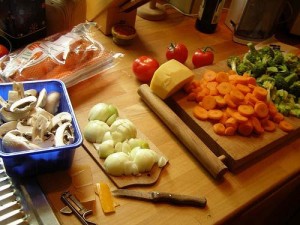 This week I discovered a wonderful new cooking and recipe blog, More Thyme Than Dough. It was started last February in response to these economically difficult times. More people are eating at home and need to prepare low-cost meals.
This week I discovered a wonderful new cooking and recipe blog, More Thyme Than Dough. It was started last February in response to these economically difficult times. More people are eating at home and need to prepare low-cost meals.
The website offers insights into food, delicious recipes with a detailed cost analysis, and beautiful, step-by-step photographs of the cooking process.
The physiology, evolutionary significance, and pleasure of taste
Back in March and April of 2009 I wrote a long series of posts on taste. I got interested in the subject when I came across the idea of supertasters – individuals who are overly sensitive to bitter tastes and, as a result, have their own peculiar food preferences. The percentage of people who are supertasters varies by nationality and ethnicity, but in the US it’s about 25%.
When More Thyme Than Dough contacted me about quoting one of my posts on taste (see the result at I Am not a Picky Eater!), I decided to resurrect them and present them here as a series.
 A matter of taste
A matter of taste
Taste happens on the tongue, but flavor is a combination of taste, smell, and touch. Without smell (think: stuffed up nose), food loses flavor. … Taste is the most important factor in choosing food, followed by cost. Whether food is actually nutritious and good for us is much less relevant to the decision process. … There are biological reasons for the five tastes — sweet, sour, salty, bitter, and savory. They promote survival.
 How do you taste?
How do you taste?
An introduction to taste buds – their anatomy, chemistry, and neurophysiology. “The structures involved in taste aren’t exactly like nested dolls. There’s only one Paul inside of John, but there are many taste buds in a papilla, many taste cells in a taste bud, and many taste receptors in a taste cell. The terms papillae, taste buds, and taste receptors come up in subsequent posts, which is why I explain them here.”
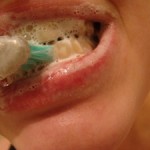 Orange juice and toothpaste
Orange juice and toothpaste
Why does orange juice taste awful after brushing your teeth? All about the detergent in your toothpaste and what it does to the phospholipid bilayer on your tongue. “What’s in your toothpaste? Probably more than you think. Toothpaste contains flourides, abrasives, detergents, thickeners, and water softeners. It also has sweeteners to hide the bad taste of all that other stuff. The ingredient that makes orange juice taste bad is a foaming detergent that cleans your teeth.”
 What is a supertaster?
What is a supertaster?
Supertasters, medium tasters, and nontasters … Sensitivity to the bitter taste of the chemicals PTC or PROP … The number of taste buds on the tongue of a supertaster. … Supertaster tongues have more papillae, more taste buds, and are more sensitive to physical stimulation. Taste buds not only transmit information about taste, but information about pain, temperature, and touch. Supertasters detect more bitterness, but also more spiciness, heat, cold, and anything painful.
 The genetics of supertasting
The genetics of supertasting
If the supertaster’s ability to detect bitterness (and thus poisons) is so valuable, why did nontasters survive genetically? The evolution of taste discrimination and its survival value. … “Supertasters learn not to eat bitter, poisonous berries after the first bite, not after they get a fatal stomach ache. The explanation could be that tasters and nontasters are sensitive to different sets of bitter tastes, and this combination of sensitivities gives an advantage to medium tasters.”
 Are you a supertaster: Do you really want to know?
Are you a supertaster: Do you really want to know?
A wine connoisseur is better off not being a supertaster. … It’s good to be sensitive to and tolerant of other people – don’t assume the way food tastes to you is universal. … “I would speculate that supertasters probably enjoy wine less than the rest of us. They experience astringency, acidity, bitterness, and heat (from alcohol) more intensely, and this combination may make wine –or some wine styles — relatively unappealing.”
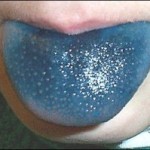 Are you a supertaster: Look at your tongue
Are you a supertaster: Look at your tongue
How to count the papillae on your tongue, using blue food coloring and a reinforcement sticker. “When you apply blue food coloring to your tongue, what you’re looking for is the areas that do NOT turn blue. The pink, round dots are the papillae. The pink dots on the tongue here are spaced fairly far apart, which makes them easy to count. This could be the tongue of a mildly sensitive taster, but definitely not a supertaster.”
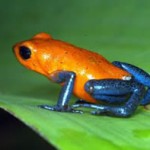 Are you a supertaster: How does PROP taste to you?
Are you a supertaster: How does PROP taste to you?
You can purchase supertaster test strips to determine your taste status. The strips are impregnated with a bitter chemical. “You can purchase test strips online from the Supertaster Test website. They come in packages of two, cost $4.95, and the shipping and handling was only an extra $2 for California. They ship internationally and come with a money-back guarantee.”
Are you a supertaster: DNA testing
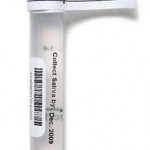 You can also have your DNA tested to see if you have the gene for bitter taste. As explained in the post on The genetics of supertasting, however, this may not be all that accurate. “It’s not clear that do-it-yourself genetic testing is worth the price. If you’re concerned about disease, you’d probably be better off with a healthy diet, not smoking, and moderate exercise.” (Since I wrote this post in April of 2009, the FDA has decided to look into new rules on direct-to-consumer genetic testing.)
You can also have your DNA tested to see if you have the gene for bitter taste. As explained in the post on The genetics of supertasting, however, this may not be all that accurate. “It’s not clear that do-it-yourself genetic testing is worth the price. If you’re concerned about disease, you’d probably be better off with a healthy diet, not smoking, and moderate exercise.” (Since I wrote this post in April of 2009, the FDA has decided to look into new rules on direct-to-consumer genetic testing.)
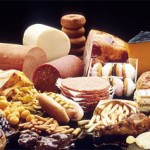 Why do we love high-fat foods?
Why do we love high-fat foods?
Fats can make any food taste better, and it’s in our interest — genetically — to prefer foods that the body needs. Unfortunately, a typical restaurant meal can have more than eight tablespoons of fat — more than an entire stick of butter. That’s way more than we need in one sitting. (The recommended daily allowance for fat is four and a half tablespoons.)
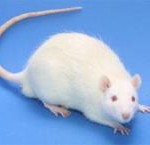 Do we taste fat?
Do we taste fat?
The flavors that make good food taste delicious are dissolved in fat. Scientists used to think that when we ate fat, we tasted these dissolved flavors and that fat itself was tasteless. We now know that’s not quite true. But the efforts involved in isolating the “taste” of fat are considerable. … “Do we ‘taste’ fat? It’s complicated. Every so often you see headlines like ‘Taste bud for fatty foods found’ or ‘Tongue sensors seem to taste fat.’ I’m not yet convinced we ‘taste’ fat in the same way we experience the taste of sugar, salt, sour, and bitter.”
 The taste advantage
The taste advantage
Are there health implications to being a supertaster as opposed to a medium or non-taster? The different groups have different preferences for and aversions to fruits, vegetables, sugar, and fats, all of which have implications for the impact of diet on health and weight gain. ”If you go through life as a nontaster, it takes more to get the flavor out of food than it does for a supertaster.” (Since this post was written (April 2009) there is new research that refutes the popular belief that fruits and vegetables protect against cancer. See Study further erodes evidence for eating fruits and vegetables to prevent cancer.)
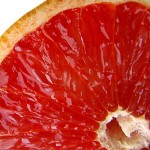 “Killer” grapefruit?
“Killer” grapefruit?
Grapefruit is a particularly bitter taste – something supertasters are unlikely to indulge in. This post and the next concern the story of a woman who had been on a grapefruit diet – and taken a long car ride – just before experiencing deep vein thrombosis (DVT). … “How did the media handle this story? It was all about the grapefruit, something anyone might innocently eat — and then promptly die. Or at least lose a leg to gangrene. I suppose, to give the media the benefit of the doubt, they probably saw this as a ‘teachable moment.’ Unfortunately, outright fear of ‘killer grapefruit’ was the wrong lesson.”
 Grapefruit and the Pill
Grapefruit and the Pill
How the press scared readers with headlines like “Hunt for DVT Cause Reveals Link to Grapefruit.” Wouldn’t you read a story that claims grapefruit causes deadly blood clots? The case was much more complicated than the grapefruit diet. It included birth control pills, a long car trip, and a pre-existing condition. “As several of the better stories pointed out, it’s unwise to do anything in extreme. When part of a balanced diet, grapefruit should not be dangerous. Given increasing evidence of the potency of the grapefruit flavonoid naringin, medical science may want to consider whether women on birth control pills should avoid eating grapefruit every day.”
 This is your brain on sugar — and sugar substitutes
This is your brain on sugar — and sugar substitutes
There’s no question that artificial sweeteners have fewer calories than sugar, but does using a sugar substitute lower the total number of calories we consume? Research indicates we might actually eat more. “If you eat a pound of chocolate, you’re done with it. At least for most people, your brain says, ‘That’s enough.’ This is hypothetical and needs to be tested, but maybe the sucralose sets the sweet taste response in motion but it might not turn the brain response off.”
The Pepsi challenge: How beliefs affect what you taste
 Taste — essential to our survival — is complex. It’s influenced by our past experiences, the associations we make with specific foods, advertising, brand loyalties, cultural and ethnic preferences, and price. If we think of it as totally objective, determined exclusively by our taste buds, we’re underestimating it. This post describes studies that show food preferences are determined more by marketing promotions than by actual taste.
Taste — essential to our survival — is complex. It’s influenced by our past experiences, the associations we make with specific foods, advertising, brand loyalties, cultural and ethnic preferences, and price. If we think of it as totally objective, determined exclusively by our taste buds, we’re underestimating it. This post describes studies that show food preferences are determined more by marketing promotions than by actual taste.
Resources:
Image source: Natural Home
Additional photo credits listed at each post.


WOW!! What a comprehensive look at taste. Excellent post. It will take me several visits and reads to digest everything here.
Thank you for the kind words about my blog and for the link to same.